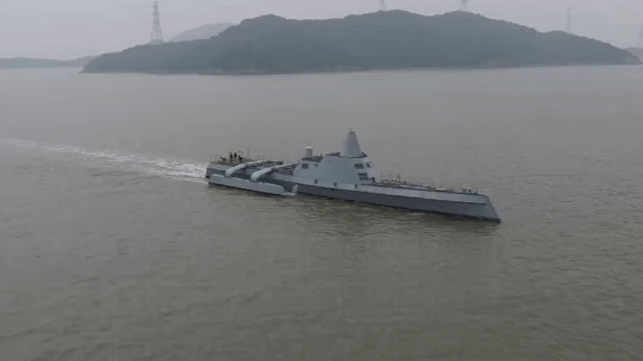The Impact of Autonomous Tech on Peacetime Naval Missions

This week, Australia revealed that it would spend up to $700 million acquiring high-tech sea mines. The last time Australia invested in naval mines was during the Vietnam War. According to the Defense Department, acquisition of the smart sea mines would help Australia deter China and other potential adversaries from sending ships and submarines to the nation’s waters. The so-called smart sea mines can differentiate between military targets and civilian ships.
Since the start of the Russia’s war in Ukraine, there has been an explosion in demand for high-tech military capabilities. Militaries around the world are upping their budgets in readiness for the changing geopolitical environment.
Autonomous weapons systems and large uncrewed surface vessels (USVs) are a major part of the discussion on the future of naval capability. The argument is that USVs offer potential solutions to the budgetary and personnel problems facing many militaries. The same could be said of the rising appetite to deploy underwater autonomous technologies, seen as an emerging frontier in naval warfare.
In fact, for a country such as China, there has been accelerated push to acquire unmanned underwater vehicles (UUVs), not just for their brute military power but their efficiency in gray zone operations. China is now regularly using UUVs to collect military intelligence in the South China Sea and the Indian Ocean.
However, in the midst of these military innovations, policy debates have ignored the question on the impact the uncrewed vessels will have on the ability of navies to carry out their broad spectrum of functions.
The s though is on how autonomous technology can fit into the war fighting naval function. Broadly, the key roles of naval forces are categorized as diplomatic, constabulary/policing and military (combat) functions.
In a new research paper published by the Marine Journal, Dr. Richard Dunley, a naval historian based at the University of New South Wales (UNSW) Canberra, canvasses this debate at length. Dr. Dunley focuses on how the peacetime functions of navies might be affected with the growth in the use of uncrewed vessels and autonomous systems.
“The development of autonomous systems and the growth of large USVs in particular, presents huge opportunities for navies in their warfighting role. The justification for this is that they provide greater capability and reach per platform, and do so with dramatically reduced crew sizes. The issue, however, is that whilst military functions can arguably be completed just as well by autonomous systems at lower cost and with less risk, the same is not true in other areas of the span of maritime tasks,” noted Dunley.
Take for instance naval diplomacy, which in the words of Kevin Rowlands, a commander in the Royal Navy, “is actually what navies do, rather than what they train for.” It is an effort to shape the behavior of other actors, both allies and adversaries, and frequently takes the form of tangible operations such as exercises and naval patrols. At the benign end of naval diplomacy also lies humanitarian aid and disaster relief operations (HADR).
Thus, at the heart of naval diplomacy are presence operations, which include port visits and other tasks, aimed at relationship building and reassurance of friendly states. In this case, crewed platforms and their personnel are critical to the mission.
Similarly, substituting, for example, a crewed helicopter with a number of uncrewed aerial vehicles (UAVs) may enhance a naval vessel’s warfighting capability, but would almost certainly be detrimental to its ability to conduct HADR operations.
“When viewed from the perspective of the broader roles of navies it seems likely that, far from offering a quick and cheap solution to navies’ budgetary problems, uncrewed platforms are going to further exaggerate them. If navies wish to continue fulfilling their wider functions as well as maintaining a warfighting edge, then they are going to have to develop USVs to complement rather than replace crewed platforms,” Dr. Dunley concluded.
